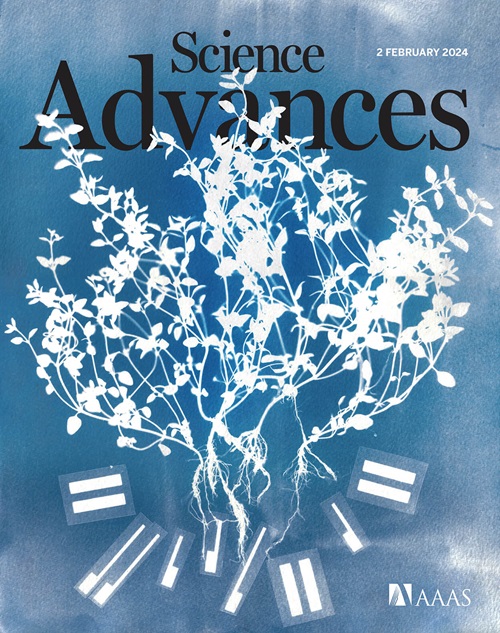脊索介导的BMP穿梭模式在针胞体的次级体轴
IF 11.7
1区 综合性期刊
Q1 MULTIDISCIPLINARY SCIENCES
引用次数: 0
摘要
骨形态发生蛋白(Bone morphogenetic protein, BMP)信号转导模式在两侧对称珊瑚和海葵的次级体轴。在许多双侧动物中,BMP配体的协调体介导的“穿梭”负责BMP信号梯度的形成,可能也在海蜇Nematostella中,使BMP穿梭成为产生双侧性的候选祖先机制。然而,索丁线虫可能是BMP的局部抑制剂,而不是一个穿梭体。为了在这些选项中做出选择,我们测试了索蛋白的细胞外迁移是否对线虫的模式形成是必需的,索蛋白是穿梭的标志,但对局部抑制是必不可少的。通过在Chordin morphant背景下产生本地化的Chordin源,我们发现移动的Chordin对于建立与Chordin源相反的BMP信号峰值是必要和充分的。这些结果为BMP在双侧对称刺胞动物中穿梭提供了证据,并表明BMP穿梭可能在潜在的双侧对称刺胞动物-双侧动物祖先中起作用。本文章由计算机程序翻译,如有差异,请以英文原文为准。
Chordin-mediated BMP shuttling patterns the secondary body axis in a cnidarian
Bone morphogenetic protein (BMP) signaling patterns secondary body axes throughout Bilateria and in the bilaterally symmetric corals and sea anemones. Chordin-mediated “shuttling” of BMP ligands is responsible for the BMP signaling gradient formation in many bilaterians and, possibly, also in the sea anemone Nematostella, making BMP shuttling a candidate ancestral mechanism for generating bilaterality. However, Nematostella Chordin might be a local inhibitor of BMP rather than a shuttle. To choose between these options, we tested whether extracellular mobility of Chordin, a hallmark of shuttling but dispensable for local inhibition, is required for patterning in Nematostella. By generating localized Chordin sources in the Chordin morphant background, we showed that mobile Chordin is necessary and sufficient to establish a peak of BMP signaling opposite to Chordin source. These results provide evidence for BMP shuttling in a bilaterally symmetric cnidarian and suggest that BMP shuttling may have been functional in the potentially bilaterally symmetric cnidarian-bilaterian ancestor.
求助全文
通过发布文献求助,成功后即可免费获取论文全文。
去求助
来源期刊

Science Advances
综合性期刊-综合性期刊
CiteScore
21.40
自引率
1.50%
发文量
1937
审稿时长
29 weeks
期刊介绍:
Science Advances, an open-access journal by AAAS, publishes impactful research in diverse scientific areas. It aims for fair, fast, and expert peer review, providing freely accessible research to readers. Led by distinguished scientists, the journal supports AAAS's mission by extending Science magazine's capacity to identify and promote significant advances. Evolving digital publishing technologies play a crucial role in advancing AAAS's global mission for science communication and benefitting humankind.
 求助内容:
求助内容: 应助结果提醒方式:
应助结果提醒方式:


